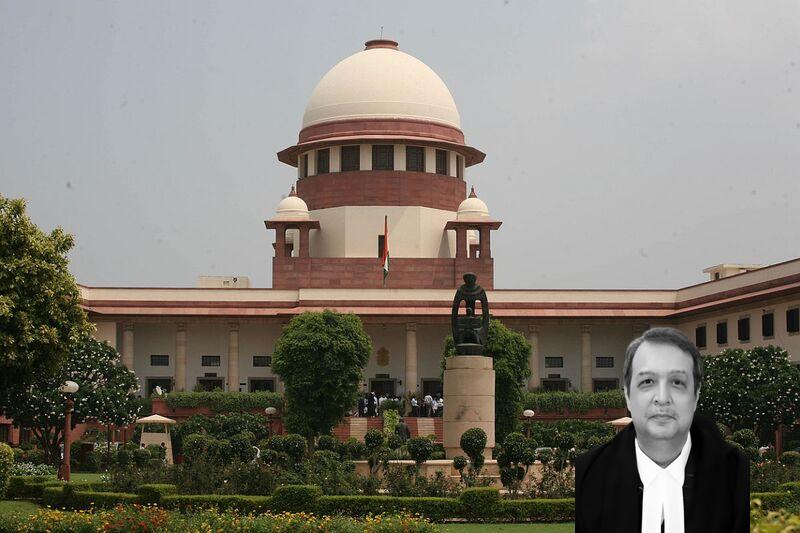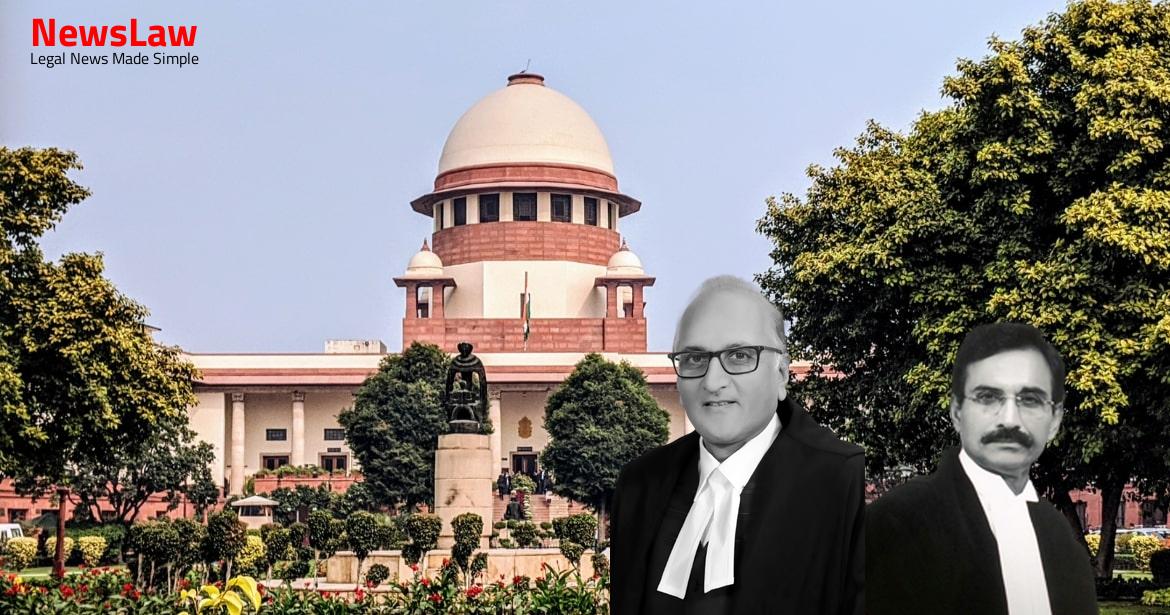These appeals are at the instance of an assessee, duly registered under Section 17 of the Uttar Pradesh Value Added Tax Act, 2008 (for short, ‘ the UP VAT Act’ ) and are directed against the common judgment and order dated Page 2 of 36 03.05.2019 passed by the High Court of Judicature at Allahabad in the Commercial Tax Revisions Nos. The assessee as stated above is a registered dealer under the UP VAT Act and the RBO manufactured by the assessee falls within the ambit of “taxable goods” under the UP VAT Act. By processing the inputs, 1,13,180.54 quintals of RBO was produced and 6,87,138.25 quintals of DORB was produced. Out of 1,13,180.54 quintals of RBO, 93,241.15 quintals of RBO was further refined to produce 76,068.37 quintals of physical refined RBO. 2013-14 and 2015- 16, respectively vide two separate orders, the Deputy Commissioner took the view that in terms of Section 13(1)(f), the assessee could have availed the ITC on the inputs only vis–vis the taxable sales, as the sale price of the final goods was lesser than the manufacturing cost of the purchased goods. We Page 5 of 36 may clarify that so far as the Assessment Year 2013-14 is concerned, it was the assessee who had to go before the Commercial Tax Tribunal by way of a second appeal as the Additional Commissioner had allowed the appeal filed by the assessee and had remanded the matter to the Tax Fixation Officer. The High Court formulated the following substantial question of law for its consideration: “Whether under the facts and circumstances of the case, the Commercial Tax Tribunal was legally justified in granting the benefit of ITC of Rs.
No 2(ii) of the Table appended thereto and Section 13(3)(b) read with Explanation (iii) of the UP VAT Act are not applicable as asserted by the assesee and the case Page 6 of 36 of the assessee stood covered by Section 13(1)(f) of the UP VAT Act. Datar further argued that the definition of the word “goods” under Section 2(m) of the UP VAT Act does not differentiate between the exempted and taxable goods and equally the word “goods” under Section 13(1)(f) of the UP VAT Act cannot be said to be qualified by the word “taxable”. It was argued that if the legislative intent in the 2010 amendment was to limit the scope and ambit of the word “goods” under Section 13(1)(f) of the UP VAT Act solely to “taxable goods”, there was nothing that prevented the concerned legislature from expressly utilising the phrase “taxable goods” in Section 13(1)(f) of the UP VAT Act.
The principal contention canvassed on behalf of the revenue is that the use of the expression “except as by-product or waste product” in Section 13(3)(b) of the UP VAT Act is decisive and if the exempt goods or non-VAT goods are being produced as the main products only and not being produced as the “by-product or waste product” then in such circumstances, Section 13(3)(b) of the UP VAT Act would have no application. The words and expressions used in Section 13(1)(f) of the UP VAT Act require a textual interpretation matching with the contextual interpretation that Section 13(1)(f) of the UP VAT Act seeks to remedy the mischief, caused by the words used in the Table of Section 13(1)(a) of the UP VAT Act. Whether the scope of the word “goods” as defined under Section 2(m) of the UP VAT Act as outlined in Section 13(1)(f) of the UP VAT Act should be limited to only “taxable goods”? Definitions xxx xxx xxx (m) “goods” means every kind or class of movable property and includes all materials, commodities and articles involved in the execution of a works contract, and growing crops, grass, trees and things attached to, or fastened to anything permanently attached to the earth which, under the contract of sale, are agreed to be severed, but does not include actionable claims, stocks, shares or securities; Xxx xxx xxx (p) “input tax” in relation to a registered dealer who has purchased any goods from within the State, means the aggregate of the amounts of tax, – (i) paid or payable by such registered dealer to the registered selling dealer of such goods in respect of purchase of such goods; and Page 11 of 36 (ii) paid directly to the State Government by the purchasing dealer himself in respect of purchase of such goods where such purchasing dealer is liable to pay tax under this Act on the turnover of purchase of such goods Provided that tax paid or payable in respect of transfer of right to use any goods shall not form part of the input tax Xxx xxx xxx (u) “manufacturer” in relation to any goods mentioned or described in column (2) of Schedule Conditions Extent of amount of input tax credit (1) (2) (3) 1.
If purchased goods are used in manufacture of – (i) any goods except non-vat goods and where such manufactured goods are sold in the course of the export of the goods out of the territory of India; or (ii) any taxable goods except non-vat goods and where such manufactured goods are sold either inside the State or in the Full amount of input tax Page 13 of 36 course of inter-State trade or commerce 3.
Act
No 19 of 2010) xxx xxx xxx (3) (a)Where purchased goods are to be used or disposed of partially for the purpose specified in clause (a) of sub-section (1) or otherwise, the input tax credit may be claimed and be allowed Page 14 of 36 proportionate to the extent they are used or disposed of for the purposes specified in such clause, (b)Subject to the provisions of this section where during process of manufacture of vat goods, exempt goods and non vat goods except as by product or waste product are produced, the amount of input tax credit may be claimed and be allowed in proportion to the extent they are used or consumed in manufacture of taxable goods other than non vat goods and exempt goods Explanation:- For the purpose of this subsection the “exempt goods” shall include taxable goods other than non vat goods, which are disposed of otherwise than by way of sale within the State or in the course of inter-State trade or commerce or sale in the course of export of goods out of the territory of India or sale out side the State.” xxx xxx xxx Explanation :-For the purposes of this section, – (i) goods for use in manufacture of any goods includes goods required for use, consumption or utilization in manufacture or processing of such goods or goods required for use in packing of such manufactured or processed goods; (ii) manufacture of any goods includes processing of such goods and packing of such manufactured or processed goods; and (iii) where during the process of manufacture of any taxable goods any exempt goods are produced as by- product or waste-product, it shall be deemed that purchased goods have been used in the manufacture of taxable goods. In the Statement of objects and reasons of the Uttar Pradesh Value Added Tax (Amendment) Bill, 2010 (for short, “the 2010 Amendment” ), it has been stated that the amendment was to provide for – “xxx (d) limiting the tax input credit to the extent of tax payable on the sale value of goods or manufactured goods in cases where goods purchased are resold or goods manufactured or processed by using or utilizing such purchased goods are sold at a price lower than purchase price or cost price;” (Emphasis supplied) 27. Datar that the definition of “goods” under Section 2(m) of the UP VAT Act referred to above does not differentiate between exempt and taxable goods and equally, the word “goods” under Section 13(1)(f) of the UP VAT Act has also not been qualified by the word “taxable”.
Had the legislative intent of the 2010 Amendment been to limit the scope and ambit of “goods” under Section 13(1)(f) solely to “taxable goods”, there was nothing that could have prevented the Legislature from expressly using the phrase “taxable goods” in Section 13(1)(f) of the UP VAT Act. Datar to the provisions of Rule 23(6) of the Uttar Pradesh Value Added Tax Rules, 2006 (for short, “the UP VAT Rules” ) (which provides for the computation of reverse ITC in cases of a dealer other than a trader), wherein the word “goods” has not been qualified by “taxable” and rather has used the word “any” to expressly convey the unequivocal legislative mandate. We take notice of the fact that “taxable goods” has been separately defined under Section 2(ai) of the UP VAT Act. The definition reads thus: Page 18 of 36 “(ai) “taxable goods” means any goods except goods mentioned or described in column (2) of Schedule I;” GENERAL PRINCIPLES FOR INTERPRETATION OF TAXING STATUTES 36. In a classic passage Lord Cairns stated the principle thus: “If the person sought to be taxed comes within the letter of the law he must be taxed, however great the hardship may appear to the judicial mind to be.
Simply because one class of legal entities is given a benefit which is specifically stated in the Act, does not mean that the benefit can be extended to legal entities not referred to in the Act as there is no equity in matters of taxation….” Page 20 of 36 41.
Also Read: https://newslaw.in/?p=548
Considerations of hardship, injustice or anomalies do not play any useful role in construing taxing statutes unless there be some real ambiguity [Mapp v. Ross and Coulter [IRC v. But equitable considerations are not relevant in construing a taxing statute, [CIT v. Similarly, hardship or equity is not relevant in interpreting provisions imposing stamp duty, which is a tax intention, and the court should not concern itself with the intention of the legislature when the language expressing such is plain and unambiguous [State of M.P. A taxing statute has to be interpreted in the light of what is clearly expressed; it cannot imply anything which is not expressed; it cannot import provisions in the statute so as to supply any deficiency; (ii) Before taxing any person, it must be shown that he falls within the ambit of the charging section by clear words used in the section; and (iii) If the words are ambiguous and open to two interpretations, the benefit of interpretation is given to the subject and there is nothing unjust in a taxpayer escaping if the letter of the law fails to catch him on account of the legislature’s failure to express itself clearly.” Page 22 of 36 44.
Datar to a letter dated 13.01.2015 addressed by the Additional Commissioner (Legal) Commercial Tax, UP to all Zonal Additional Commissioner Grade-I, Commercial, Tax Uttar Pradesh (Annexure P-1) which reads thus: “Letter No.
Commissioner Grade-1 Commercial Tax Faizabad Zone, Faizabad has given the following report: The Joint Commissioner (SIB) Commercial Tax Gonda in the perspective of provisions of section 13(3) (B) read with section 13(1)(f) of the VAT Act has expressed this presumption that if the sale of any taxable goals is effected at the low price than the purchase cost of the raw material then the trader shall get the benefit of ITC only up to the extent of sale value of manufactured goods. Hence in relation to above please examine the records manufacturing units of your zone involved in the extraction of rice bran and oil cake. The relevant Entry is reproduced below for ease of reference: “SCHEDULE I Page 24 of 36 [See clause (b) of Section 7 of Uttar Pradesh Value Added Tax Act, 2008] LIST OF EXMEPTED GOODS SI. Furthermore, Section 13(3)(b) of the UP VAT Act, introduces the concept of proportionality in the scheme of the enactment and by means of a deeming fiction provides that where during the manufacture of VAT goods, exempt and non-VAT goods (except as by-product or waste product) are produced, the amount of ITC credit may be claimed and may be allowed in proportion to the extent they are used or consumed in manufacture of taxable goods other than the non-VAT goods and exempt goods. In such cases, the legislature has done well to take care of the grey area by providing for another legal fiction in the form of Explanation (iii) to Section 13 wherein it is provided that during the manufacture of any taxable goods, any exempt goods are produced as by-product or waste product, it shall be deemed that the purchased goods have been used in the manufacture of taxable goods. Agro Tech (supra), was rendered by this Court, examining the claim of ITC by an assessee on the goods purchased under the Karnataka Value Added Tax Act, 2003 (for short “Karnataka VAT Act” ). Apportionment.— Apportionment of input tax in the case of a dealer falling under section 17 shall be calculated as follows.- (1) All input tax directly relating to sale of goods exempt under section 5 other than such goods sold in the course of export out of the territory of India, is non-deductible. This Court while examining Section 17 of the KVAT Act, read with Rule 131 of the KVAT Rules, held that ITC was admissible to the extent of inputs used in the sale of taxable goods. Therefore, de-oiled cake fits into the definition of “goods” and this commodity is exempt from payment of any VAT under Section 5 of the KVAT Act. On the other hand, sub-rule (3) covers those cases where input tax is not directly relatable to exempt goods and taxable goods. This clearly shows that major outcome (88%) of the solvent extraction plant is de-oiled cake which in itself is a marketable good having market value.” (Emphasis supplied) 57. –
(a) Input tax shall not be deducted in calculating the net tax payable in respect of — tax paid on purchases attributable to sale of exempted goods exempted under Section 5, except when such goods are sold in the course of export out of the territory of India; ” 61. The Karnataka VAT Act with the aid of Section 17 read with Rule 131 of the Karnataka VAT Rules seeks to provide a statutory mechanism for grant of partial rebate where a registered dealer deducting input tax makes sale of taxable goods as well as exempt goods. Further, Rule 131 of the KVAT Rules specifically provides that all input tax directly relating to sale of goods exempt under Section 5 other than such goods sold in the course of export out of the territory of India, is non-deductible. It says that where during the manufacture of any taxable goods, any exempt goods are produced as by-products or waste product, it shall be deemed that the purchased goods have been used in the manufacture of taxable goods, creating a wholly distinct scheme to the one envisaged under the Karnataka VAT Act. Input tax credit (1)… (f) Notwithstanding anything to the contrary contained in this sub- section where goods purchased are resold or goods manufactured or processed by using or utilizing such purchased goods are sold, at the price which in lower than (a) purchase price of such goods in case of resale; or (b) cost price in case of manufacture, the amount of input tax credit shall be claimed and be allowed to the extent of tax payable on the sale Section 11. –Where a registered dealer deducting input tax- (1) makes sales of taxable goods and goods exempt under Section 5, or (2) in addition to the sales referred to in clause (1), dispatches taxable goods or goods exempted under Section 5 outside the State not as a direct result of sale or purchase in the course of inter-State trade, or (3) puts to use the inputs purchased in any other purpose (other than sale, manufacturing, processing, packing or storing of goods), in addition to use in the course of his business, apportionment and attribution of input tax deductible between such sales and dispatches of goods or such purpose, shall be made in accordance with Rules or by special methods to be approved by the Commissioner or any other authorised person and any input tax deducted in excess shall become repayable forthwith.” (3) Any input tax relating to both sale of taxable goods and exempt goods including inputs used for non- taxable transactions, that is, the non- deductible input tax, may be calculated on the basis of the following formula: (Sales of exempt goods + non- taxable transactions) x
Also Read: https://newslaw.in/?p=554
Total input tax.
Case Title: M/S MODI NATURALS LTD Vs. THE COMMISSIONER OF COMMERCIAL TAX UP
Case Number: C.A. No.-005822-005823 / 2023



